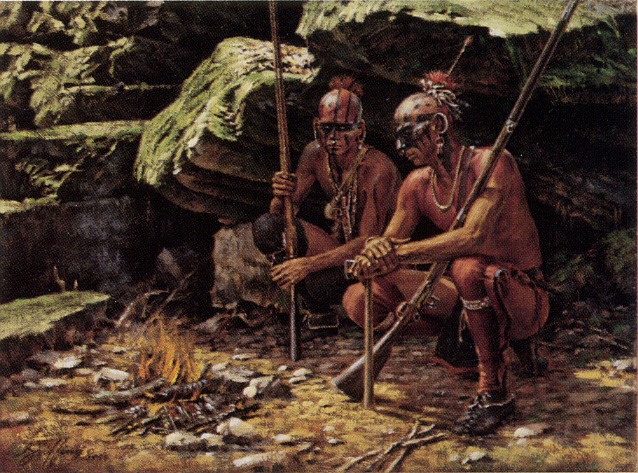Original to the state of New York, the Mohawk Indians are a group of Native American Indians who also called themselves Kanienkehaka. They are a part of the larger Iroquois Confederation also called the Haudenosaunee. When compared to other Iroquois tribes, the Mohawk people were unique in their appearance, customs, and rituals which is why they were such an intriguing subject for Early American Literature. Perhaps one of the most known Native American tribes (for a hairstyle alone) are the Mohawks. Inasmuch as the look of warriors going into battle with the sides of their heads shaved is a distinction, there are many other interesting tidbits about the Mohawks that set them apart from other tribes on Turtle Island. The Mohawk Indians created what we now call the "Mohawk" hairstyle in which areas of hair were shaved and tweezed so that only a single row was left at the top. Mohawk chiefs were always men, but women were the only ones to vote on who the chief would be. The chief was in charge of making all decisions about war as well as trade agreements. In the 1700s, many Mohawk left New York and withdrew into Southeastern Canada. Today, the Mohawk population is spread throughout much of New York with some Indians living on reservations and some living in the general population. The men held typical roles of hunting, trading and fighting. Women were responsible for farming, taking care of their family and all land and property decisions. The Mohawk were a particularly violent tribe. They commonly fought with the Algonquin, the Wabanaki, Ojibway, and the Mohican bands. As a means of acknowledging Indian territory and establishing a friendly rapport, the Treaty of Canandaigua was drafted during the Post-Revolutionary war era. It was signed by the Haudenosaunee and the United States in 1794. The Mohawk were particularly skilled at the art of beadwork and porcupine quill artistry, which is unique to North American Indians. The sacred art of mask carving, however, is an art form that held special meaning to the Mohawk. Elaborate masks were designed and used solely in religious ceremonies and not often seen by outsiders.
Mohawk Indian Tribe
